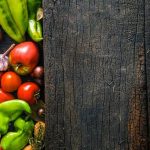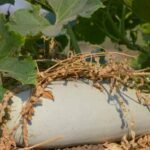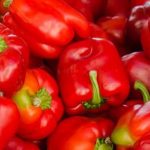Are you a Wisconsin resident looking to start your own vegetable garden? In this article, we will provide you with valuable Wisconsin vegetable gardening tips to help you get started.
Whether you’re a beginner or an experienced gardener, these tips will help you make the most of your garden and produce a bountiful harvest. From understanding the climate to selecting the best vegetables, preparing the soil, dealing with pests and diseases, and harvesting and preserving your produce, we’ve got you covered.
Wisconsin’s unique climate presents both opportunities and challenges for vegetable gardening. Understanding the specific conditions of this region is crucial for a successful garden. We will delve into the intricacies of Wisconsin’s climate and how it impacts vegetable gardening, giving you insights that will be invaluable as you plan your garden.
In addition to climate considerations, choosing the right vegetables for your Wisconsin garden is essential. Certain varieties thrive in this region’s conditions, while others may struggle. We’ll explore the best vegetables for Wisconsin gardens so that you can make informed choices when selecting what to grow in your own garden. With our comprehensive guide, you’ll be well-equipped to start your Wisconsin vegetable garden journey with confidence.
Understanding the Wisconsin Climate for Vegetable Gardening
Wisconsin has a diverse climate that can vary greatly depending on the region, making it important for vegetable gardeners to understand the unique challenges and advantages of gardening in this state. The climate in Wisconsin can be classified as humid continental, with warm summers and cold winters. However, the northern parts of the state tend to have shorter growing seasons and cooler temperatures than the southern regions.
One key factor to consider when gardening in Wisconsin is the last frost date, which typically ranges from late April to mid-May in most areas. This means that gardeners should choose vegetables that are suitable for the shorter growing season and able to withstand potential late frosts. Additionally, Wisconsin experiences a significant amount of rainfall throughout the year, so proper drainage is important to prevent waterlogged soil that can harm vegetable plants.
The climate diversity in Wisconsin also presents both challenges and opportunities for vegetable gardening. Gardeners can take advantage of cool-season crops like lettuce, peas, and radishes that thrive in spring and fall temperatures. However, they may need to provide protection or select heat-tolerant varieties for warm-season crops like tomatoes, peppers, and squash during hot summer months. Understanding these climate factors will help Wisconsin vegetable gardeners make informed decisions about plant selection and care.
Selecting the Best Vegetables for Wisconsin Gardens
When it comes to selecting the best vegetables for Wisconsin gardens, it’s important to consider the unique climate and growing conditions of the state. Wisconsin experiences a variety of temperatures throughout the year, with cold winters and warm summers, making it crucial to choose vegetables that are well-suited for these conditions.
Cold-Hardy Vegetables
One key consideration for Wisconsin vegetable gardening is choosing cold-hardy vegetables that can withstand the state’s chilly temperatures. Vegetables such as broccoli, cabbage, carrots, and kale are excellent choices for Wisconsin gardens due to their ability to thrive in cooler weather. These vegetables can be planted early in the season and are often able to withstand light frosts.
Warm-Season Vegetables
In addition to cold-hardy vegetables, it’s also important to select warm-season vegetables that can handle Wisconsin’s short but warm summer months. Tomatoes, peppers, cucumbers, and zucchini are all popular choices for Wisconsin gardens as they require a longer growing season and warmer temperatures to flourish. These vegetables should be planted after the last spring frost has passed and will need consistent watering and care throughout the summer months.
Root Vegetables
Root vegetables such as potatoes, beets, and radishes are another great option for Wisconsin gardens. These vegetables thrive in cool soil and are relatively low-maintenance once planted. Root vegetables are versatile in their uses and can be stored for longer periods after harvesting.
By carefully selecting a mix of cold-hardy, warm-season, and root vegetables for your Wisconsin garden, you can ensure a bountiful harvest throughout the growing season. It is also advisable to seek local advice on which specific varieties work best in your particular area of Wisconsin from experienced gardeners or local agricultural extension offices familiar with wisconsin vegetable gardening tips.
Preparing the Soil for Vegetable Gardening in Wisconsin
When preparing the soil for vegetable gardening in Wisconsin, it is crucial to consider the unique climate and environmental conditions of the region. The first step is to test the soil to determine its pH level and nutrient content. This can be done with DIY kits or by sending a sample to a local agricultural extension office. Understanding the soil composition will help in choosing the right amendments to improve its quality.
In Wisconsin, the most common soil types are clay, loam, and sandy soils. Each type has its own characteristics and requires different approaches for improvement. For example, clay soils tend to compact easily, making it difficult for roots to penetrate, while sandy soils drain quickly and may have poor nutrient retention. Adding organic matter such as compost or well-rotted manure can help improve soil structure and fertility for all soil types.
Another important consideration when preparing the soil for vegetable gardening in Wisconsin is addressing any drainage issues. Proper drainage is essential for healthy plant growth as waterlogged soil can lead to root rot and other problems. Raised beds or incorporating organic matter into the soil can improve drainage in gardens with poor soil structure.
| Soil Type | Recommended Amendments |
|---|---|
| Clay Soil | Compost, Sand, Gypsum |
| Sandy Soil | Compost, Peat Moss, Mulch |
| Loam Soil | Compost, Manure, Cover Crops |
By taking these factors into account and amending the soil accordingly, Wisconsin gardeners can create a healthy foundation for their vegetable gardens. By investing time and effort into preparing the soil properly at the beginning of the season, gardeners will set themselves up for success throughout the growing season.
It is important to note that continuous monitoring of the soil’s condition throughout the growing season is critical. This may include additional fertilization if needed or adjusting watering practices based on seasonal weather patterns. By following these Wisconsin vegetable gardening tips for preparing the soil, gardeners are more likely to have a bountiful harvest at the end of their growing season.
Planting and Care Tips for Wisconsin Vegetable Gardens
When it comes to planting and caring for vegetable gardens in Wisconsin, there are several tips to keep in mind to ensure a successful harvest. Here are some important guidelines to follow:
1. Planting Schedule: It is crucial to pay attention to the recommended planting schedule for vegetables in Wisconsin. The state’s climate can be quite challenging, with cold winters and short growing seasons. Be sure to start seeds indoors or use season extenders like row covers or hoop houses to protect tender plants from late spring frosts.
2. Spacing and Sunlight: Proper spacing between plants is essential for good airflow and sunlight penetration, which can help prevent disease and promote healthy growth. Make sure to follow the spacing recommendations on seed packets or plant labels. Most vegetables require at least 6-8 hours of direct sunlight, so choose your garden location wisely.
3. Soil Care: Wisconsinite gardeners should pay close attention to soil health by regularly testing the pH levels and adding organic matter such as compost or aged manure. This will improve soil structure, fertility, and water retention, creating an optimal environment for plant growth.
4. Mulching and Watering: Mulching helps conserve soil moisture, regulate soil temperature, and suppress weeds. Apply a layer of organic mulch around your vegetable plants after they have become established. Also, be mindful of watering needs, especially during hot summer months. Consistent watering is key to preventing stress on the plants.
By following these Wisconsin vegetable gardening tips for planting and caring for your garden, you can yield a bountiful harvest despite the unpredictability of the state’s climate.
Dealing With Pests and Diseases in Wisconsin Vegetable Gardens
When it comes to maintaining a healthy vegetable garden in Wisconsin, dealing with pests and diseases is crucial to ensure a bountiful harvest. Here are some tips for managing these common challenges:
1. Identify the problem: Regularly inspect your plants for any signs of pests or diseases. Look for holes in leaves, discoloration, wilting, or any unusual growth. Identifying the issue early on can help prevent it from spreading to other plants.
2. Natural pest control methods: Consider using natural pest control methods such as attracting beneficial insects like ladybugs and lacewings to help keep harmful pests at bay. Additionally, you can use physical barriers like row covers to protect your plants from pests.
3. Disease-resistant varieties: When selecting which vegetables to grow in your Wisconsin garden, choose disease-resistant varieties whenever possible. These varieties are specifically bred to have natural resistance to common diseases, reducing the likelihood of an outbreak in your garden.
4. Crop rotation: Implementing a crop rotation plan can help prevent the build-up of soil-borne diseases in your garden. By rotating the location of different vegetable crops each year, you can disrupt the life cycles of pests and pathogens that may overwinter in the soil.
5. Organic pest control products: If natural methods are not sufficient to manage pests and diseases in your Wisconsin vegetable garden, consider using organic pest control products as a last resort. These products are less harmful to beneficial insects and wildlife while still effectively managing pest populations.
By implementing these tips for dealing with pests and diseases, Wisconsin vegetable gardeners can enjoy a thriving garden all season long.
Remember that keeping an eye out for signs of issues is essential when gardening vegetables.
Watering and Irrigation Tips for Wisconsin Vegetable Gardens
Wisconsin is known for its diverse climate, including warm summers and cold winters. Therefore, when it comes to vegetable gardening in Wisconsin, it is crucial to have an effective watering and irrigation plan in place. Proper watering is essential for the health and productivity of your vegetable garden. With the right techniques and tips, you can ensure that your vegetables thrive even in Wisconsin’s fluctuating climate.
One of the most important wisconsin vegetable gardening tips when it comes to watering is to be mindful of the specific needs of each type of vegetable. Some vegetables, such as tomatoes and peppers, require consistent moisture throughout their growing season, while others, like onions and garlic, prefer drier conditions. It’s important to research the water requirements of each vegetable you plan to grow and create a customized watering schedule based on those needs.
In addition to understanding the specific water needs of your vegetables, it’s also vital to pay attention to the timing and method of watering. In Wisconsin, where temperatures can vary widely from day to day, it’s best to water your garden in the morning or evening to minimize evaporation. Drip irrigation systems or soaker hoses are also excellent options for efficiently delivering water directly to the plant roots while minimizing waste.
Lastly, mulching is a beneficial practice for conserving soil moisture in Wisconsin vegetable gardens. Applying a layer of organic mulch around your plants helps regulate soil temperature and reduce evaporation, allowing you to use water more efficiently. By implementing these watering and irrigation tips in your Wisconsin vegetable garden, you can ensure that your plants receive adequate moisture throughout the growing season, leading to a bountiful harvest.
Harvesting and Preserving Vegetables From Wisconsin Gardens
When it comes to harvesting and preserving vegetables from your Wisconsin garden, there are several important tips to keep in mind. From knowing when to harvest your crops to the best methods for preserving them, here are some valuable guidelines for getting the most out of your vegetable garden.
Harvesting Tips
Knowing when to harvest your vegetables is crucial for ensuring they are at their peak flavor and nutritional value. Different vegetables have different signs that indicate they are ready to be harvested.
For example, tomatoes should be picked when they are fully colored and firm, while leafy greens like lettuce and spinach can be harvested once they reach a desirable size. Be sure to regularly check your garden for ripe produce, as leaving it on the plant too long can lead to a decline in quality.
Preservation Methods
Once you’ve harvested your vegetables, it’s important to preserve them properly so you can enjoy the fruits of your labor well beyond the growing season. Canning, freezing, and pickling are popular methods for preserving vegetables in Wisconsin. Canning works well for high-acid vegetables like tomatoes and pickles, while freezing is ideal for vegetables like peas and corn.
Pickling is a great way to preserve cucumbers and other hardy vegetables. Consider investing in a pressure canner or freezer bags to ensure your preserved vegetables stay fresh.
Storage Tips
Proper storage is essential for keeping your harvested vegetables fresh as long as possible. Some items should be stored in cool, dark places such as root cellars or refrigerators, while others may fare better at room temperature. Be sure to remove any damaged or decaying produce from the storage area immediately to prevent spoilage of other items. With careful attention to harvesting, preserving, and storing your Wisconsin-grown vegetables, you can enjoy their flavors throughout the year.
can help you make the most{” “}.
garden by providing guidance on how{” “}.
to select{” “}the best plants,{” “}.
prepare {” “}the soil,{” “}nurture {” “}your crops,{” “}and tackle common challenges{” “}like pests,{” “}.
disease,{” “}and weather conditions typical{” “}of Wisconsin’s climate.
Whether you’re new{” “}to gardening or have years of experience,{” “}.
following these tips will give you{” “}a better chance {” “}of growing successful vegetable{” “}gardens in Wisconsin.
With proper care and attention,{” “}.
you’ll soon be enjoying an abundant harvest of fresh,{” “}home-grown produce throughout the growing season”.
Community Resources and Support for Wisconsin Vegetable Gardeners
In conclusion, Wisconsin vegetable gardening can be a rewarding and fruitful endeavor with the right knowledge and resources. By understanding the unique climate of Wisconsin and selecting the best vegetables for the region, gardeners can set themselves up for success. Preparing the soil properly is essential for healthy plant growth, and planting and care tips specific to Wisconsin can help ensure a bountiful harvest.
Dealing with pests and diseases is an inevitable part of gardening, but there are strategies that Wisconsin vegetable gardeners can employ to minimize damage. Additionally, implementing proper watering and irrigation techniques will help maintain healthy plants throughout the growing season. Harvesting and preserving vegetables from Wisconsin gardens allows gardeners to enjoy the fruits of their labor well beyond the growing season.
Finally, community resources and support play a crucial role in helping Wisconsin vegetable gardeners succeed. Whether it’s joining a local gardening club, attending workshops or seeking advice from experienced gardeners, connecting with others in the community can provide valuable insights and encouragement. With these tips and resources at their disposal, Wisconsin vegetable gardeners are well-equipped to create thriving gardens that yield delicious produce.
Frequently Asked Questions
When Should I Start a Vegetable Garden in Wisconsin?
In Wisconsin, it’s best to start a vegetable garden in late April or early May, once the danger of frost has passed. This allows for a longer growing season and optimal conditions for most vegetables.
How Often Should I Water My Vegetable Garden in Wisconsin?
The frequency of watering your vegetable garden in Wisconsin depends on the weather and soil moisture. Generally, aim to provide about 1 inch of water per week, either through rainfall or irrigation, to keep the soil consistently moist but not waterlogged.
What Is a Good Layout for a Vegetable Garden?
A good layout for a vegetable garden typically includes planting beds that are no wider than 4 feet to allow easy access from both sides. Consider using raised beds or rows with paths between them for efficient planting, maintenance, and harvesting. Additionally, rotating crops each year can help prevent diseases and maintain soil fertility.

If you’re looking to get into vegetable gardening, or are just looking for some tips on how to make your current garden better, then you’ve come to the right place! My name is Ethel and I have been gardening for years. In this blog, I’m going to share with you some of my best tips on how to create a successful vegetable garden.





